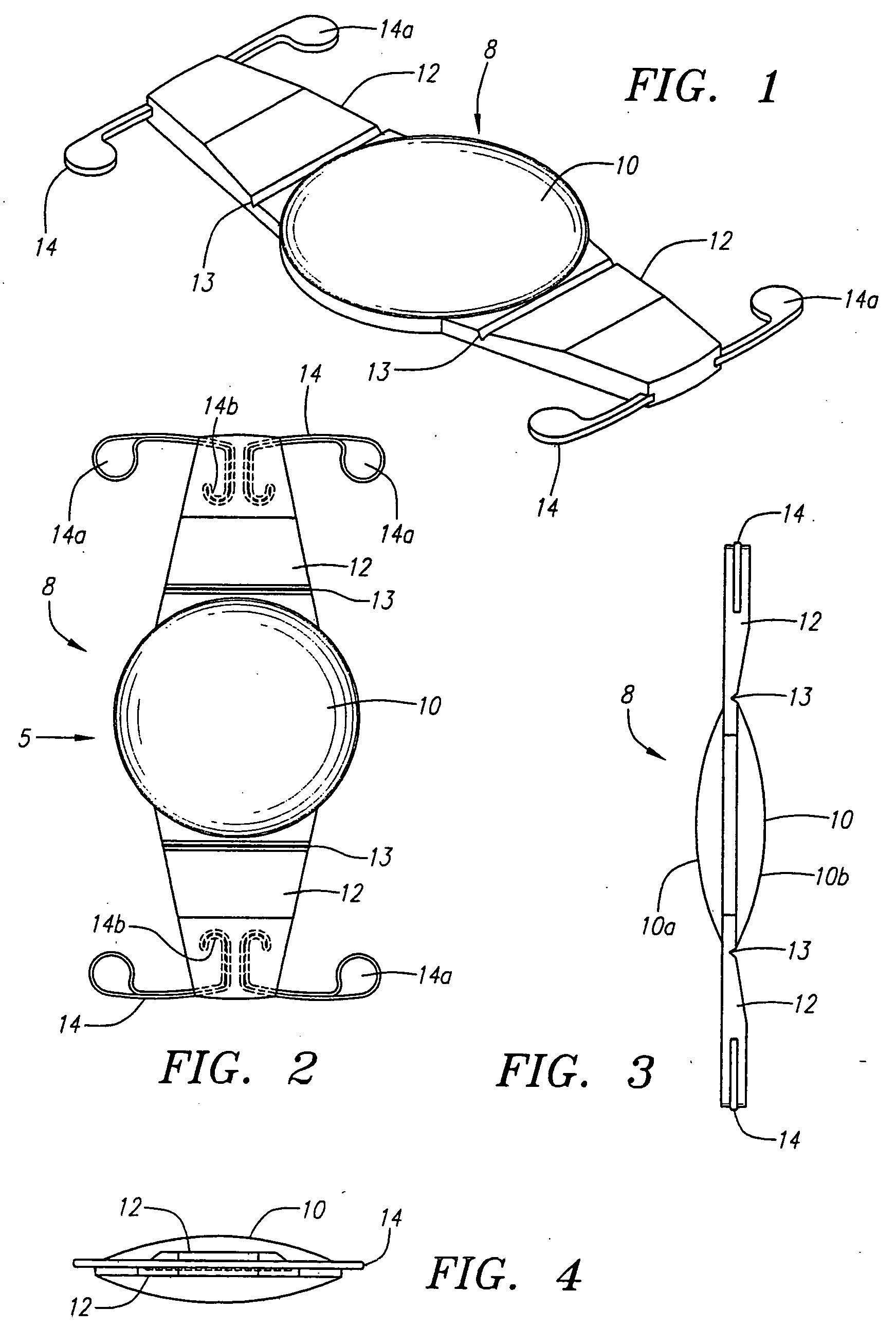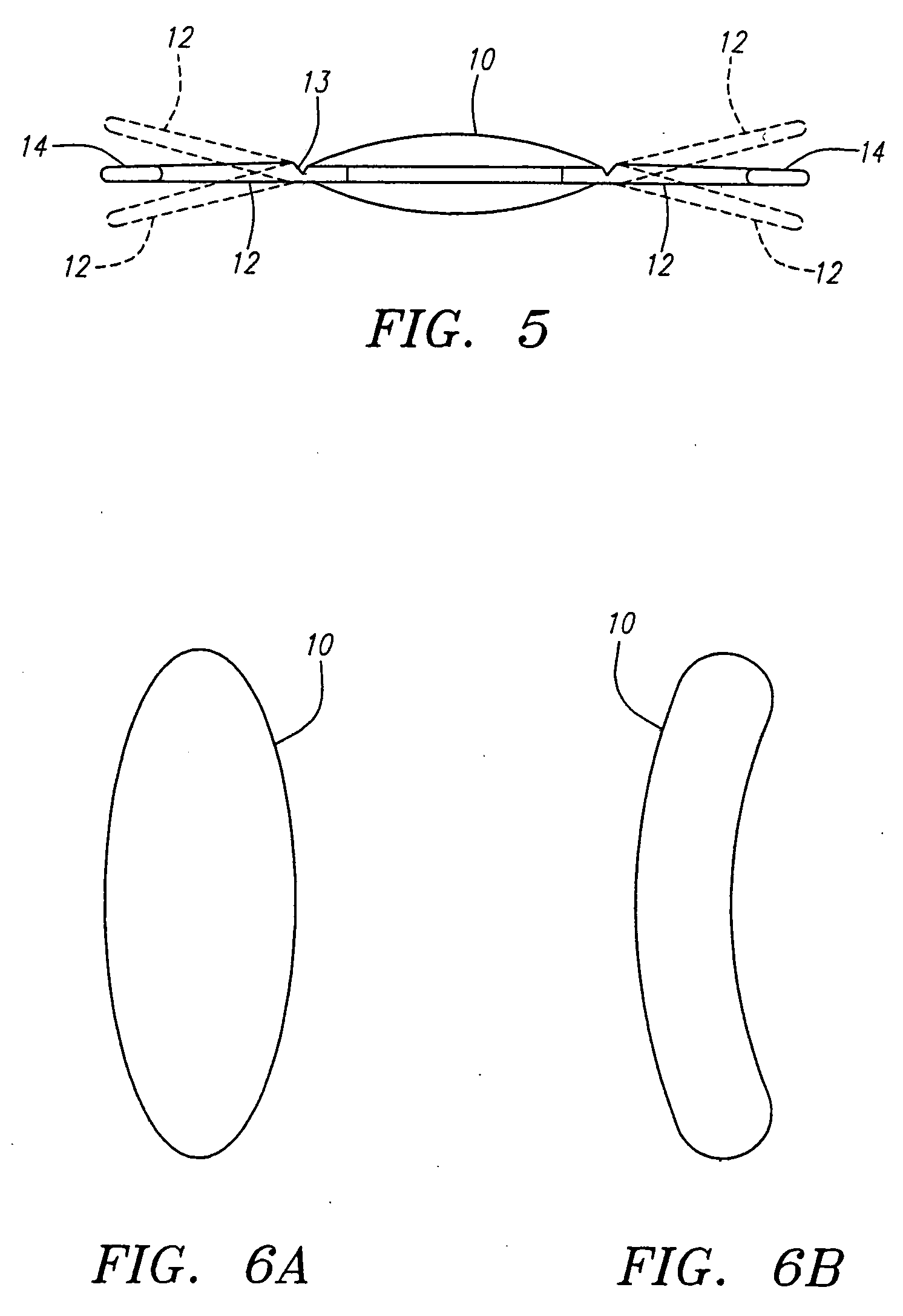Accommodating arching lens
a technology of arching lens and accommodating frame, which is applied in the field of new accommodating intraocular lenses, can solve the problems of degrading or completely destroying the ability of the eye to function properly, bifocal intraocular lenses, and only about 40% of available light in bifocal images, so as to achieve the effect of improving accommodation
- Summary
- Abstract
- Description
- Claims
- Application Information
AI Technical Summary
Benefits of technology
Problems solved by technology
Method used
Image
Examples
Embodiment Construction
[0038] Turning now to FIGS. 1 through 4, an intraocular lens 8 according to the present invention is shown in detail and which replaces and performs the accommodation function of a removed human crystalen lens. The lens 8 may be utilized to replace either a natural lens which is virtually totally defective, such as a cataractious natural lens, or a natural lens that provides satisfactory vision at one distance without the wearing of glasses but provides satisfactory vision at another distance only when glasses are worn. For example, the accommodating intraocular lens of the invention can be utilized to correct refractive errors and restore accommodation for persons in their mid-40s or older who require reading glasses or bifocals for near vision.
[0039] Intraocular lens 8 comprises a flexible unitary lens body, including a flexible biconvex solid optic 10, which may be formed of relatively hard material, relatively soft flexible semi-rigid material, or a combination of both hard and...
PUM
 Login to View More
Login to View More Abstract
Description
Claims
Application Information
 Login to View More
Login to View More - R&D
- Intellectual Property
- Life Sciences
- Materials
- Tech Scout
- Unparalleled Data Quality
- Higher Quality Content
- 60% Fewer Hallucinations
Browse by: Latest US Patents, China's latest patents, Technical Efficacy Thesaurus, Application Domain, Technology Topic, Popular Technical Reports.
© 2025 PatSnap. All rights reserved.Legal|Privacy policy|Modern Slavery Act Transparency Statement|Sitemap|About US| Contact US: help@patsnap.com



